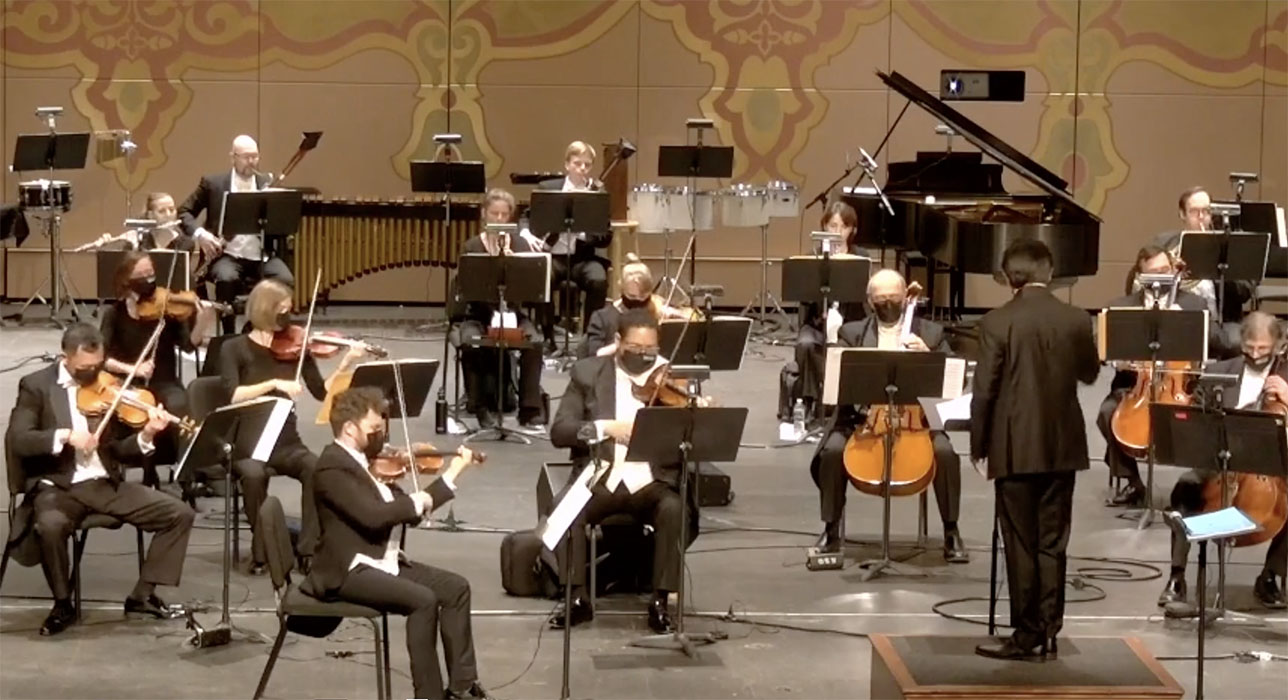Mendelssohn — Symphony No. 4 (“Italian”)
Respighi — Trittico Botticelliano
Ligeti — Romanian Concerto
At some point in the future, 21st Century observers will have enough distance to accurately judge the socio-political upheavals that the Covid-19 pandemic has brought to the globe, and the ensuing effects of those upheavals on arts and stylistic expression. For now, though, 21 years past the 20th Century and its wars, genocides, and political extremism, we can enjoy enough sunny distance to understand how that century’s upheavals changed the course of arts and stylistic expression. In music alone, let’s not forget that 1900-1999 saw the tail end of Romanticism as well as the birth of electronic music, of the operas of Puccini and Philip Glass, and of both riots (Stravinsky’s The Rite of Spring) and get-togethers (Woodstock) for entirely different reasons.
Perhaps a fitting symbol of the contrasts that the upheavals of the 20th Century revealed is the Hungarian composer György Ligeti ( LIH – gih – tee). Born in Romania in 1923 to Jewish parents, Ligeti and his family suffered greatly during the Nazi regime of the 1940s, the composer himself pressed into forced labor. After the war, Ligeti continued his musical training in Budapest, cut off from changes in music by the restrictive communist governments. In 1956, he was able to emigrate to Vienna and West Germany. Without the stylistic restrictions of the Soviet bloc, Ligeti’s own style began to reflect modern textures and tonalities influenced by the early experimentations by others in electronic music.
Although championed by filmmaker Stanley Kubrick, who excerpted some of his works for 2001: A Space Odyssey without authorization in 1968 and with authorization in later films such as The Shining and Eyes Wide Shut, Ligeti’s post-1960 work has had difficulties with traditional classical music listeners. In a 2001 essay in The New Yorker entitled “Ligeti Split”, music writer Alex Ross bemoans this unfortunate situation: “Where the Romantics used to smile through tears, Ligeti cries through smiles.”
However, the Romantics are smiling in Ligeti’s 1951 work Concert Românesc (Romanian Concerto) that KSO music director Aram Demirjian has chosen for this week’s Masterworks concert at the Tennessee Theatre. The work is unabashedly lyrical from its gentleness and warmth of Romanian folk music. It is difficult to believe that the work, rich with woodwind textures and string lushness, was banned in Budapest, not to be performed until 1971.
Romantics will also be smiling in Maestro Demirjian’s other works on Thursday’s program, Felix Mendelssohn’s Symphony No. 4 (“The Italian Symphony”) and Ottorino Respighi’s Trittico Botticelliano (“Botticelli Triptych”). The latter Respighi has slightly more modest, but equally charming, intentions than the composer’s major tone poems such as Pines of Rome. This enchanting work’s three movements refer to Botticelli’s paintings in Florence’s Uffizi Gallery: La primavera (Spring), L’adorazione dei Magi (The Adoration of the Magi), and La nascita di Venere (The Birth of Venus).
Mendelssohn’s Italian Symphony grew from the composer’s tour of Italy in 1830-31 that was undoubtedly a pleasant one based on the work’s spirit and sunny charm, as well as its Italian references in the final movement, a feast of Neapolitan dance-like fervor and exhilaration.
This KSO performance continues the current practice of offering some limited seating for live audiences as well as live-streaming. Check the KSO link above for information and tickets.








